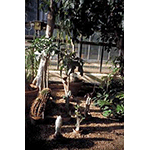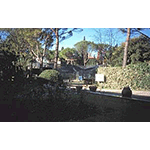Istituto Agronomico per l'Oltremare [Institute of Agronomy for Overseas]
It was born in 1904 as the Colonial Agricultural Institute with the purpose of conducting studies and research in support of the agricultural services to the colonies (training technicians, publication of the magazine, «Agricoltura Coloniale», consultancy), and to assist Italian emigrants to integrate into the new agricultural realities. In 1939, it became a State Company with the name of Agricultural Institute for Italian Africa; its tasks consisted in preparing technicians and supplying agricultural consultancy to the governments of Eritrea, Somalia, Libya and Ethiopia. After World War II, the Institute supplied technical assistance to the Italian emigrants to Latin America, maintaining collaborative relations with the ex colonies. In 1953, it passed under the Ministry for Foreign Affairs with its present name and, in 1962, became its consultancy organ in the technical-scientific agricultural field. Its responsibilities currently concern cooperation in development, training, research, collection of documentation and technical assistance.
The Institute possesses a collection of tropical and subtropical plants, an entomological collection and an Agricultural Museum. The exhibits, for the most part, were collected by Institute experts during their missions.
The collection of tropical and subtropical plants includes some 300 of the most important species. Plants are cultivated in the hot and cold greenhouses and, a small part, in the Institute’s garden, and are grouped according to their utilisation.
Of its collection of tropical and subtropical insects, worthy of mention is the Kruger collection of insects from Cyrenaica, acquired in the nineteen-twenties. The samples are for the most part conserved dry (in entomological drawers) or under alcohol. The species come from a good part of Africa, South America and the Orient. There are also Italian and European samples. The collection grows continuously.
The Tropical Agrarian Museum, presently subjected to remodelling and refurbishing, presents a collection of products of animal and vegetable origin, farming and handcrafted objects, clothing and musical instruments from Africa, Asia, Oceania and Latin America, mainly collected by Institute experts. The collection also has an educational purpose and, among other things, includes samples of materials that are illustrated from raw up to finished product.
The Institute also has a collection (of about 1500 exhibits) of "general" maps (topographic, geographic, etc.) and "thematic" maps (pedagogical, phytogeographic, climatic, etc.), subdivided by geographic area and country, as well as a rich photographic archive which includes 70,000 photographic prints (60,000 in albums, 10,000 loose), 10,000 slides and plates, 65,000 negatives, concerning tropical and subtropical agriculture, and the uses and customs of the local populations.
Finally, the Centre for Inedited Documentation, born in the mid nineteen-fifties, collects unpublished documents such as mission reports, correspondence, studies, conference minutes, article originals. The Institute conserves 4,570 files, each of which contains various archive documents. The documentation concerns, for the most part, the Italian ex colonies and Italian emigration to Latin America after the end of World War II.
****************************
Texts by Donato Monaco
English translation by Victor Beard
Last update 26/feb/2008





